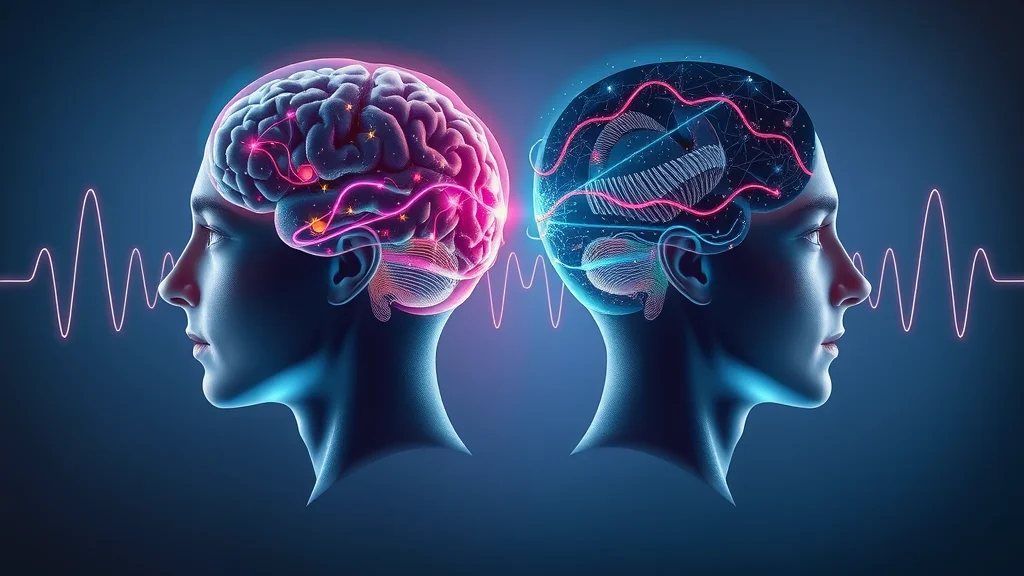Startling fact: Over 70% of successful hypnotic interventions use a combination of direct and indirect hypnosis techniques. While many people believe hypnosis is merely about putting someone into a deep trance, modern hypnotherapy is far more nuanced. Whether you’re a practitioner, a curious client, or just exploring, understanding the difference between direct vs indirect hypnosis techniques could transform how you think about the mind and its ability to change. Are you ready to discover the direct and indirect routes to lasting behavioral change?
Understanding Direct vs Indirect Hypnosis Techniques
Startling fact: Over 70% of successful hypnotic interventions use a combination of direct and indirect hypnosis techniques.
Exploring how direct suggestion and indirect suggestion impact the conscious mind and unconscious mind.
Direct vs indirect hypnosis techniques are foundational pillars in the world of hypnotherapy. The distinction lies not just in language, but in how each approach interacts with a client’s conscious and unconscious mind. Direct suggestion involves straightforward instructions like, “You will now feel calm,” which primarily targets the conscious mind. Indirect suggestion, pioneered by figures like Milton Erickson, employs storytelling, metaphors, and subtle cues that bypass the critical faculty and seed ideas into the unconscious mind. Both methods, when understood and applied well, allow therapists to create more effective and tailored interventions—ranging from overcoming phobias to supporting deep, lasting change in behavior.
This guide dives into how hypnosis techniques—both direct and indirect—can be combined for remarkable results. We’ll break down their core differences, the types of suggestion each uses, and why leading hypnotherapists use both for optimal outcomes. Whether you’re looking for practical tools or a scientific explanation, you’ll come away with a deeper appreciation for how direct and indirect suggestion transform the mind.

What You'll Learn About Direct vs Indirect Hypnosis Techniques
Core distinctions between direct suggestion and indirect suggestion.
How direct hypnosis techniques address the conscious mind.
Why indirect hypnosis strategies often target the unconscious mind.
Practical hypnosis techniques you can apply today.
Defining Direct Hypnosis Techniques
What Is Direct Hypnosis?
Origins and scientific basis of direct hypnosis.
Role of direct suggestion in engaging the conscious mind.
Direct hypnosis centers on the use of explicit, unambiguous suggestions delivered by the hypnotist. Its origins trace back to the early days of clinical hypnosis, where practitioners employed what’s known as the direct style: clear instructions intending to produce rapid shifts in a client’s thoughts or behaviors. Scientific studies confirm that in certain individuals—especially those with high suggestibility or a preference for structure—direct suggestions working through the conscious mind can achieve quick results.
The essence of direct suggestion is simplicity; comments such as “Your arm is getting lighter,” or “You are now relaxing deeply” are aimed at bypassing the critical faculty, the conscious gatekeeper that often questions or resists new ideas. By addressing the conscious mind directly, these approaches attempt to induce a trance state where change is swiftly initiated. In modern practice, direct hypnosis is commonly used in behavior modification, pain control, and habit management, especially when the client easily responds to straightforward instruction.
When employing direct hypnosis, body language and tone are paramount—the hypnotist uses confident gestures and an authoritative presence to reinforce the clinical hypnosis process. This method is widely recognized for its efficiency in achieving a hypnotic trance and is an integral part of many hypnotherapy sessions today.

Examples of Direct Hypnosis Techniques
Common direct suggestions in clinical settings.
Practical scenarios: Overcoming phobias, habit control.
Direct hypnosis techniques thrive on clarity and authority. In a clinical setting, phrases like, “You will now stop smoking,” or, “Each day, you will feel more confident,” are frequently used to harness a state of hypnosis. These direct suggestions cut through the conscious mind’s resistance, rapidly inducing a trance state for changing specific behaviors. For example, someone battling a fear of public speaking may hear, “Each time you face a crowd, you feel calm and assured.” Similarly, in habit control—such as weight management—clear, repetitive statements are designed to target deep-rooted behavioral patterns.
Direct style techniques are especially helpful when immediate or short-term results are desired. They are often preferred with motivated clients who are open to following explicit instructions. However, this approach may not be suitable for those with a strong critical faculty or those who challenge direct authority, as the conscious mind might resist or reject overt suggestions. Still, many practitioners blend direct and indirect approaches, ensuring a flexible, client-centered hypnotherapy session for maximum effectiveness.
For those interested in how hypnosis compares to other mind-focused practices, exploring the distinctions between hypnosis and meditation can provide valuable context on how direct and indirect techniques uniquely influence mental states and personal transformation.
“Direct hypnosis provides clients with clear, authoritative guidance designed to bypass critical faculty and rapidly initiate change.”
Defining Indirect Hypnosis Techniques
What Is Indirect Hypnosis?
The philosophy behind indirect suggestion and indirect hypnosis approaches.
How indirect suggestions appeal to the unconscious mind.
The Milton Erickson legacy in indirect hypnosis.
Indirect hypnosis stems from a philosophy that the most effective change occurs when the unconscious mind accepts suggestions organically. Rather than issuing commands, the hypnotist uses storytelling, metaphor, and nuanced language patterns to plant ideas subtly—a process known as seeding ideas. This is the hallmark of the indirect style developed and championed by Milton Erickson, who believed that every person has the inner resources to initiate lasting change if given gentle direction.
Indirect suggestion is particularly potent in clients with strong analytical or resistant conscious minds because it bypasses the critical faculty. The hypnotic suggestions are woven seamlessly into conversation or narratives, allowing the unconscious mind to accept and act on them without active resistance. This approach is commonly used in therapy settings, habit change, and covert hypnosis—where the client may be unaware they’re receiving guidance. The indirect method supports clients in making changes that feel natural, autonomous, and self-generated, enhancing the sustainability of results.
Examples of Indirect Hypnosis Techniques
Storytelling, metaphor, and seeding ideas.
Practical scenarios: Therapy, habit change, covert hypnosis.
Some of the most effective indirect hypnosis techniques include the strategic use of stories, metaphors, and specific language patterns. For example, a hypnotherapist might tell a client a tale about someone overcoming obstacles—planting the suggestion that change is possible. By embedding hypnotic suggestions within normal conversation, practitioners seed ideas into the unconscious mind, prompting change without direct confrontation with the conscious mind.
In therapy, this method is invaluable for clients with skepticism or resistance to direct commands. Whether it’s using covert hypnosis to gently change a habit or weaving metaphors into counseling sessions for deeper transformation, indirect suggestion creates a permissive environment where new patterns are encouraged to emerge. Practitioners draw from Erickson’s legacy, recognizing that flexibility and artistry in language make indirect hypnosis a cornerstone of effective modern hypnotherapy.

“Indirect suggestions leverage the mind’s natural tendencies to accept ideas indirectly, fostering deeper transformation.”
Direct vs Indirect Suggestion in Hypnosis Techniques
Feature |
Direct Suggestion |
Indirect Suggestion |
|---|---|---|
Style |
Clear, explicit language |
Metaphorical, suggestive language |
Recipient |
Conscious mind |
Unconscious mind |
Critical Faculty |
Bypassed with direct commands |
Bypassed through subtlety |
Best Use |
Structured individuals, rapid change |
Analytical clients, deep transformation |
Examples |
“You now feel confident.” |
“Some people notice confidence growing, quietly, inside.” |

The Science: Conscious Mind vs Unconscious Mind in Hypnosis
How Direct Hypnosis Engages the Conscious Mind
Direct hypnosis is most effective when the conscious mind is open and receptive to change. The direct style uses concise and commanding language to directly address the conscious mind, aiming to swiftly move clients into a hypnotic trance by overcoming the critical faculty. This process relies on the conscious mind’s willingness to follow authoritative suggestion—classic instructions like “Your eyelids are becoming heavier” work by directing mindful attention and expectation, setting the stage for deeper transformation.
In this approach, body language, verbal tone, and the therapist’s presence reinforce the sense of authority and safety that clients need in order to relax. While some individuals with high logical or skeptical tendencies may put up resistance, many experience rapid shifts thanks to the straightforward engagement with the conscious mind. Direct hypnosis techniques thus offer a focused, time-efficient route to change, especially for those who prefer structure during their hypnotherapy session.
How Indirect Hypnosis Bypasses the Critical Faculty to Reach the Unconscious Mind
Indirect hypnosis techniques leverage soft, ambiguous language to sidestep the mind’s critical faculty and access the unconscious mind. By engaging the client's imagination through stories, metaphors, or embedded commands, this method allows change to unfold without conscious scrutiny. For example, the hypnotist might muse about “how, sometimes, people find themselves letting go of worries,” gently seeding ideas without direct confrontation.
This approach, central to Ericksonian hypnosis, is especially useful when clients’ conscious minds are analytical or naturally resistant to being told what to do. The therapist’s subtlety and flexibility pave the way for a trance state in which deep, longstanding changes can occur. Indirect hypnosis, therefore, is suited for cases where overt commands would be rejected or ignored, and the goal is to foster organic, lasting change from the inside out.

Benefits and Limitations: Direct vs Indirect Hypnosis Techniques
Strengths of direct hypnosis techniques: Rapid, clear, and effective for straightforward issues or highly suggestible clients. Works best when prompt results are needed and the client values structure.
Strengths of indirect hypnosis techniques: Suited for resistant, analytical, or skeptical clients. Fosters deeper, more autonomous transformation and works where direct suggestion might fail.
Limitations of both approaches: Direct methods may struggle with resistant clients and can feel forceful; indirect methods require more skill and time, and outcomes can be less predictable if subtly is misunderstood.
Choosing Between Direct vs Indirect Hypnosis Techniques
Factors influencing effectiveness: client receptivity, goals, and setting.
When to use direct suggestion versus indirect suggestion.
Selecting between direct vs indirect hypnosis techniques requires understanding the unique needs of each client. Some individuals respond best to clear, assertive direction—especially in fast-paced behavioral interventions or when working with clients comfortable with authority. Others, notably those with a strong critical faculty or skepticism, might only engage when the approach is gentle, metaphorical, or woven into conversation. Factors like the client’s personality, presenting issues, and the therapeutic context all play a part.
Practitioners are encouraged to develop skills in both direct and indirect suggestion, using a flexible toolkit to tailor each hypnotherapy session. Often, integrating both styles delivers the best of both worlds—enabling deep, lasting change that feels safe and personally meaningful for the client.

Popular Hypnosis Techniques Used by Professionals
Authoritative direct suggestions in behavioral change: Clear guidance for habits like smoking cessation or weight loss.
Metaphor-based indirect hypnosis: Using stories and analogy to foster subconscious understanding and growth.
Combined approaches in modern hypnotherapy: Flexible frameworks mixing direct and indirect techniques for comprehensive, client-centered care.
Case Studies: Direct vs Indirect Hypnosis Techniques in Practice
Direct hypnosis for smoking cessation: A client responds well to repeated, explicit commands: “Each cigarette becomes less appealing.” Rapid change observed over a brief period.
Indirect hypnosis in anxiety management: Another client, initially skeptical, finds long-term relief through metaphorical stories about letting go of burdens, illustrating the power of indirect suggestion for deep transformation.
Hybrid approaches—a practitioner’s perspective: Experienced hypnotherapists report using direct and indirect suggestion sequentially or simultaneously. For example, integrating direct style relaxation cues with metaphorical references, maximizing engagement of both the conscious mind and unconscious mind, creates a state of hypnosis where lasting change is achievable.
Below is a demonstration video where a professional hypnotherapist performs a step-by-step direct hypnosis session with a volunteer. The video highlights the use of authoritative language, confident body language, and direct client engagement in a bright, welcoming office setting.
Coming soon — a comprehensive explainer video showcasing live examples of metaphor, storytelling, and indirect hypnosis techniques in a real therapy session.
People Also Ask: Direct vs Indirect Hypnosis Techniques
What is the difference between direct and indirect hypnosis?
Direct hypnosis employs clear, explicit commands or suggestions tailored to the conscious mind, while indirect hypnosis uses subtle cues, stories, or metaphors to influence the unconscious mind.
What are the techniques of indirect hypnosis?
Techniques include storytelling, metaphors, conversational hypnosis, and linguistic patterns developed by Milton Erickson.
What is the direct method of hypnosis?
The direct method uses straightforward language and explicit instructions, such as 'You are now feeling relaxed,' often bypassing the critical faculty.
What is the most effective hypnosis technique?
Effectiveness depends on the individual; some respond better to direct suggestion, but many experts find indirect hypnosis achieves deeper, longer-lasting outcomes.
Key Takeaways: Direct vs Indirect Hypnosis Techniques
Direct suggestions are authoritative and work best for certain personality types.
Indirect suggestions are subtle and can be more effective for bypassing resistance.
Both hypnosis techniques play essential roles in modern hypnotherapy.
FAQs: Direct vs Indirect Hypnosis Techniques
Which hypnosis technique is more suitable for beginners? Beginners often benefit from direct suggestions, as they are straightforward to learn and apply, while indirect techniques require a more nuanced understanding of language and storytelling.
Are there risks associated with indirect hypnosis? Indirect hypnosis is generally safe when used by trained professionals. However, inexperienced practitioners may deliver suggestions that are too vague, leading to unpredictable outcomes or lack of clear benefits.
Can direct and indirect hypnosis be combined effectively? Yes, many professionals blend both approaches for maximum impact, leveraging the strengths of each according to client needs and situations.
How do I choose the right hypnosis technique for my client? Consider your client’s personality, level of suggestibility, and receptivity. Direct suggestions are best for compliant clients and urgent issues; indirect suggestion is effective for deeper, more resistant cases.
Conclusion and Next Steps
Direct vs indirect hypnosis techniques offer powerful options for creating change. Explore training or consult a certified hypnotherapist for personalized guidance and to unlock the full potential of these transformative methods.
As you continue your journey into the world of hypnosis, consider broadening your understanding by examining how these techniques compare to other transformative practices. Delving into the key differences between hypnosis and meditation can reveal new perspectives on mental clarity, relaxation, and self-improvement. By exploring these complementary approaches, you’ll gain deeper insight into how to harness the full spectrum of mind-body techniques for personal growth or professional practice. Whether you’re seeking to refine your skills or simply expand your knowledge, the next step could open up even more effective pathways to lasting change.
 Add Row
Add Row  Add
Add 




Write A Comment